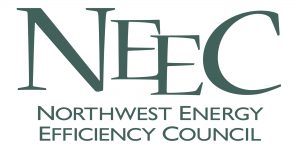The Northwest Power and Conservation Council has released a public comment draft of the 7th Power Plan. This plan is designed to meet the Northwest region’s power needs for the next 5 years to help ensure a “reliable and economic power system.” The following description of the Plan and the public comment period comes directly from the Power Council. A list of dates and locations for public testimony is included as well.
Increased energy efficiency and demand response – programs or contracts to reduce power use during periods of peak demand – plus the increased use of existing natural gas-fired power plants to offset retiring coal-fired power plants offers the Northwest the lowest-cost, lowest-carbon energy future, according to the Council’s Draft Seventh Northwest Power Plan. In fact, if the energy efficiency targets in the draft plan are met and demand-response resources are developed, there is a low probability that new power plants will be needed for at least the next five years, except possibly in areas where demand for electricity grows rapidly.
The Council approved the Draft Seventh Plan this week and directed staff to prepare the document for public review during a 60-day comment period beginning October 20, 2015. See the executive summary.
Eight public hearings are scheduled around the Northwest in November and December.
“Meeting the energy efficiency goals in the draft power plan will reduce electricity bills over time for consumers as well as help keep the regional power supply adequate, reliable, and low-carbon,” Council Chair Phil Rockefeller said.
The power plan provides guidance to the federal Bonneville Power Administration and electric utilities in the region to help ensure a reliable and economical power system. The Council revises the plan, which looks 20 years into the future, every five years. In the plan, the Council forecasts demand for electricity and assigns power-generation and energy efficiency resources to meet demand.
Energy efficiency is the highest-priority resource in the Council’s power plans, as it provides the most cost-effective and least risky response to the region’s growing electricity needs. It also reduces summer and winter peak demand for power and buys time to develop cost-effective alternative sources of carbon-free generation. By acquiring all of the efficiency envisioned in the draft plan and replacing retiring coal-fired generators with no-carbon or low-carbon generation, such as renewable resources or natural gas-fired plants respectively, the region should be able to comply with the EPA’s carbon emissions limits, even under low water conditions for hydropower.
The resource strategy for the Draft Seventh Power Plan consists of eight primary actions:
1. achieve the energy efficiency targets in the plan;
2. meet short-term needs for winter peaking capacity through the use of demand response except where expanded reliance on extra-regional electricity markets can be assured;
3. satisfy existing renewable-energy portfolio standards;
4. increase the near term use of existing natural gas fired generation, as this offers the lowest-cost option for reducing regional carbon emissions;
5. increase the utilization of regional resources to serve regional energy and capacity needs;
6. ensure that future carbon policies are cost-effective and maintain regional power system adequacy;
7. support the research and development of emerging energy efficiency and clean energy resources; and
8. adaptively manage future resource development to match actual future conditions.
For more information on why the Northwest has a regional power plan and how it is developed, see the Seventh Power Plan webpage.
